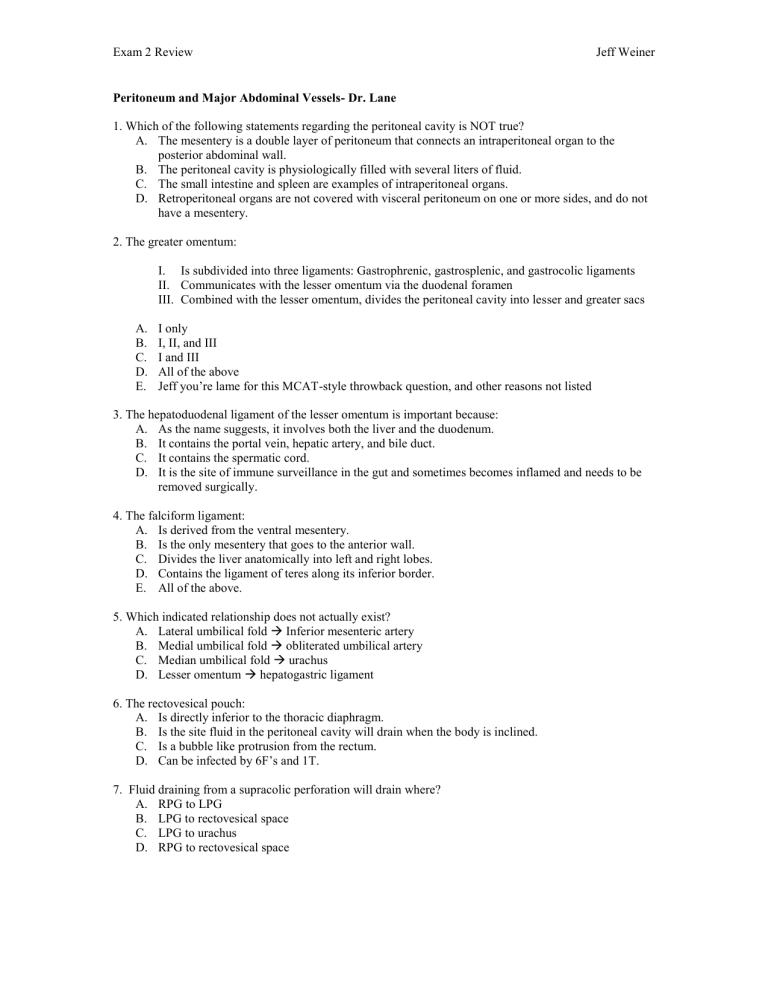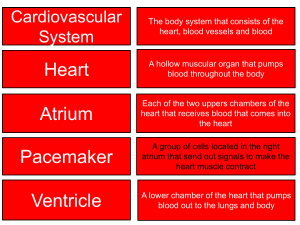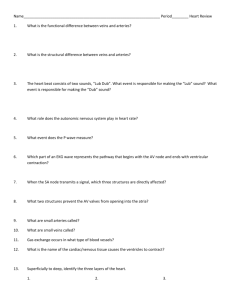Peritoneum and Major Abdominal Vessels

Exam 2 Review Jeff Weiner
Peritoneum and Major Abdominal Vessels- Dr. Lane
1. Which of the following statements regarding the peritoneal cavity is NOT true?
A.
The mesentery is a double layer of peritoneum that connects an intraperitoneal organ to the posterior abdominal wall.
B.
The peritoneal cavity is physiologically filled with several liters of fluid.
C.
The small intestine and spleen are examples of intraperitoneal organs.
D.
Retroperitoneal organs are not covered with visceral peritoneum on one or more sides, and do not have a mesentery.
2. The greater omentum:
I.
Is subdivided into three ligaments: Gastrophrenic, gastrosplenic, and gastrocolic ligaments
II.
Communicates with the lesser omentum via the duodenal foramen
III.
Combined with the lesser omentum, divides the peritoneal cavity into lesser and greater sacs
A.
I only
B.
I, II, and III
C.
I and III
D.
All of the above
E.
Jeff you’re lame for this MCAT-style throwback question, and other reasons not listed
3. The hepatoduodenal ligament of the lesser omentum is important because:
A.
As the name suggests, it involves both the liver and the duodenum.
B.
It contains the portal vein, hepatic artery, and bile duct.
C.
It contains the spermatic cord.
D.
It is the site of immune surveillance in the gut and sometimes becomes inflamed and needs to be removed surgically.
4. The falciform ligament:
A.
Is derived from the ventral mesentery.
B.
Is the only mesentery that goes to the anterior wall.
C.
Divides the liver anatomically into left and right lobes.
D.
Contains the ligament of teres along its inferior border.
E.
All of the above.
5. Which indicated relationship does not actually exist?
A.
Lateral umbilical fold
Inferior mesenteric artery
B.
Medial umbilical fold
obliterated umbilical artery
C.
Median umbilical fold
urachus
D.
Lesser omentum
hepatogastric ligament
6. The rectovesical pouch:
A.
Is directly inferior to the thoracic diaphragm.
B.
Is the site fluid in the peritoneal cavity will drain when the body is inclined.
C.
Is a bubble like protrusion from the rectum.
D.
Can be infected by 6F’s and 1T.
7. Fluid draining from a supracolic perforation will drain where?
A.
RPG to LPG
B.
LPG to rectovesical space
C.
LPG to urachus
D.
RPG to rectovesical space
Exam 2 Review Jeff Weiner
8. Which statement about the branches of the celiac artery is incorrect?
A.
The left gastric artery supplies the lesser curvature of the stomach.
B.
The left gastro-omental is a branch of the splenic artery and travels along the greater curvature.
C.
The gastroduodenal artery is a branch of the splenic artery.
D.
The cystic artery is a branch of the right hepatic artery.
9. The superior mesentery artery:
A.
Is not associated with the marginal artery of Drummond.
B.
Supplies structures derived from the hindgut.
C.
Gives the superior rectal artery as a branch.
D.
Has middle colic, right colic, anterior and posterior cecal, appendicular, jejunal and ilieal arteries as branches.
10. Which of the following statements regarding the inferior mesenteric artery are NOT true?
A.
The left colic artery, which has ascending and descending branches, is the 3 rd branch of the inferior mesenteric artery.
B.
The superior rectal descends the furthest of any of the branches of the inferior mesenteric artery.
C.
The inferior rectal artery supplies structures derived from the hindgut.
D.
The superior rectal artery is Victor Parker’s largest artery, as it supplies the most active area of his body. It is about twice the size of the average man’s aorta.
11. The hepatic portal vein:
A.
Ascends with the hepatic artery and bile duct in the hepatoduodenal ligament.
B.
Is formed by the joining of the splenic vein with the superior mesenteric vein.
C.
The inferior mesenteric vein is not involved, and does not join with the splenic vein.
D.
The left gastric vein does not join directly with the portal vein.
12. Which of the following statements regarding portal hypertension is NOT true?
A.
It occurs when portal circulation is obstructed, either by liver disease or tumor
B.
The esophageal branch of the left gastric vein will anastamose with esophageal branches to azygos in esophageal varices.
C.
The paraumbilical branch of the portal vein will anastamose with the superior and inferior epigastric vein in caput medusae varices.
D.
The colic, duodenal, and pancreatic veins will anastamose with lumbar and renal veins in anorectal varices.






